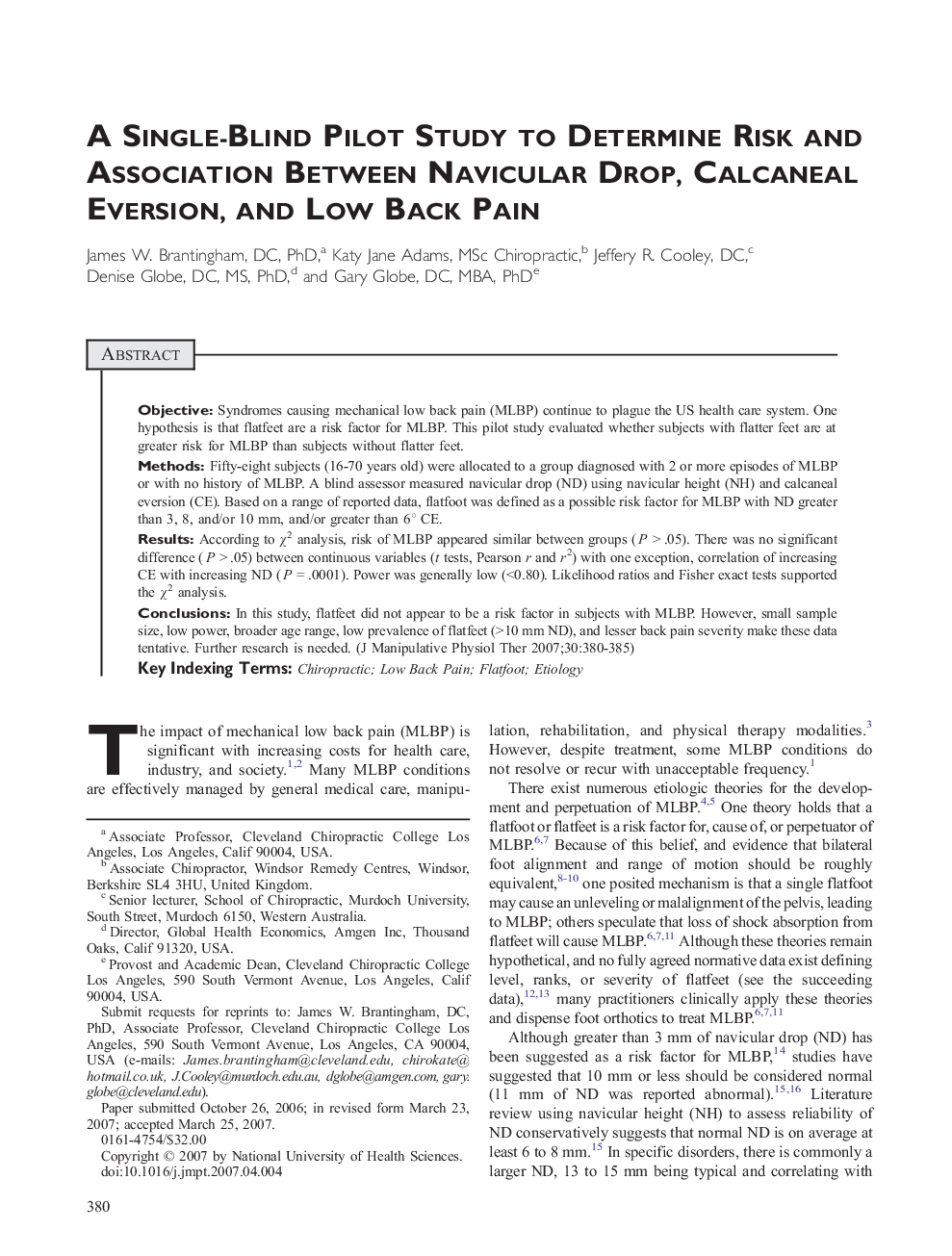| کد مقاله | کد نشریه | سال انتشار | مقاله انگلیسی | نسخه تمام متن |
|---|---|---|---|---|
| 2621388 | 1135687 | 2007 | 6 صفحه PDF | دانلود رایگان |

ObjectiveSyndromes causing mechanical low back pain (MLBP) continue to plague the US health care system. One hypothesis is that flatfeet are a risk factor for MLBP. This pilot study evaluated whether subjects with flatter feet are at greater risk for MLBP than subjects without flatter feet.MethodsFifty-eight subjects (16-70 years old) were allocated to a group diagnosed with 2 or more episodes of MLBP or with no history of MLBP. A blind assessor measured navicular drop (ND) using navicular height (NH) and calcaneal eversion (CE). Based on a range of reported data, flatfoot was defined as a possible risk factor for MLBP with ND greater than 3, 8, and/or 10 mm, and/or greater than 6° CE.ResultsAccording to χ2 analysis, risk of MLBP appeared similar between groups (P > .05). There was no significant difference (P > .05) between continuous variables (t tests, Pearson r and r2) with one exception, correlation of increasing CE with increasing ND (P = .0001). Power was generally low (<0.80). Likelihood ratios and Fisher exact tests supported the χ2 analysis.ConclusionsIn this study, flatfeet did not appear to be a risk factor in subjects with MLBP. However, small sample size, low power, broader age range, low prevalence of flatfeet (>10 mm ND), and lesser back pain severity make these data tentative. Further research is needed.
Journal: Journal of Manipulative and Physiological Therapeutics - Volume 30, Issue 5, June 2007, Pages 380–385